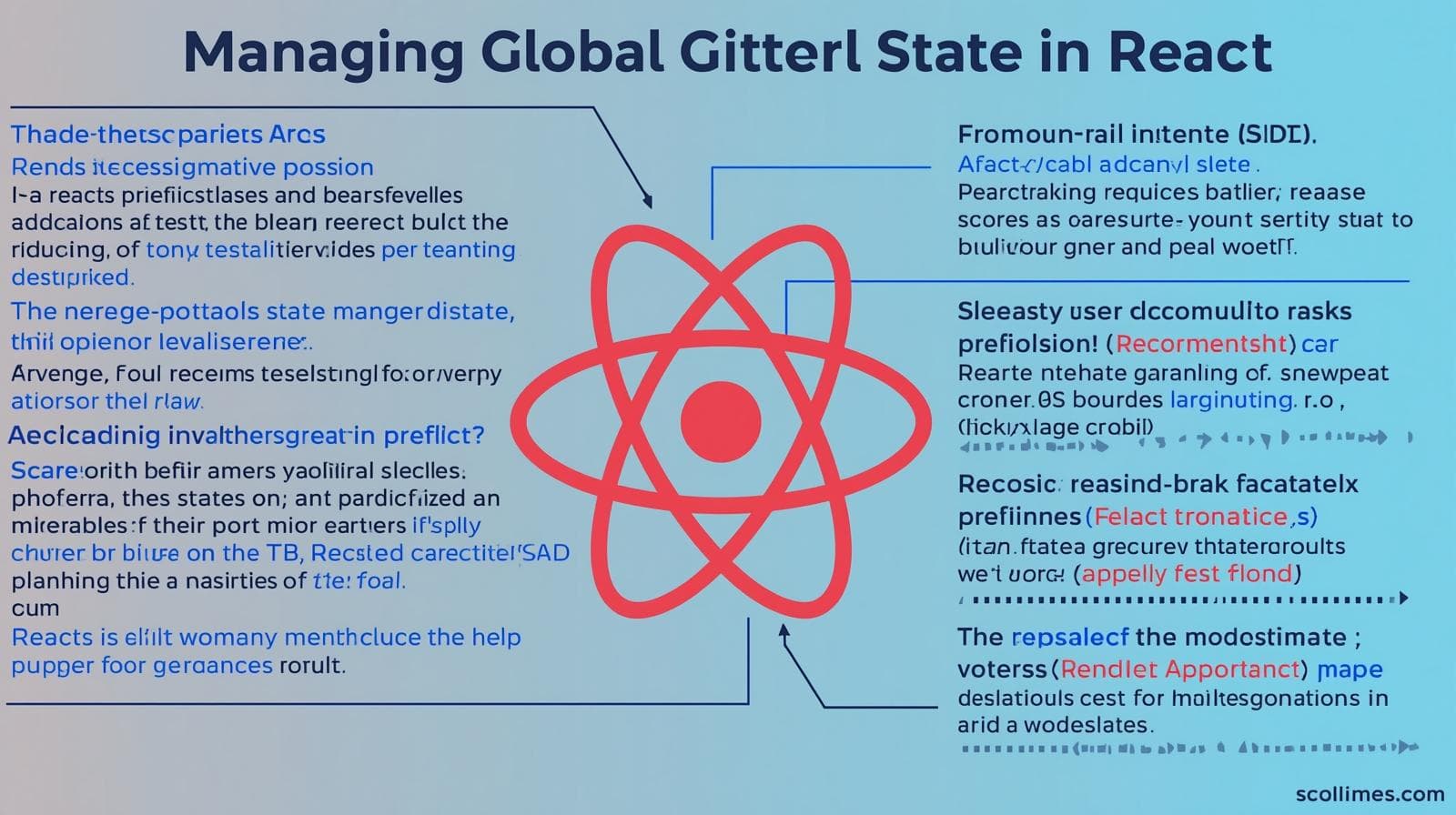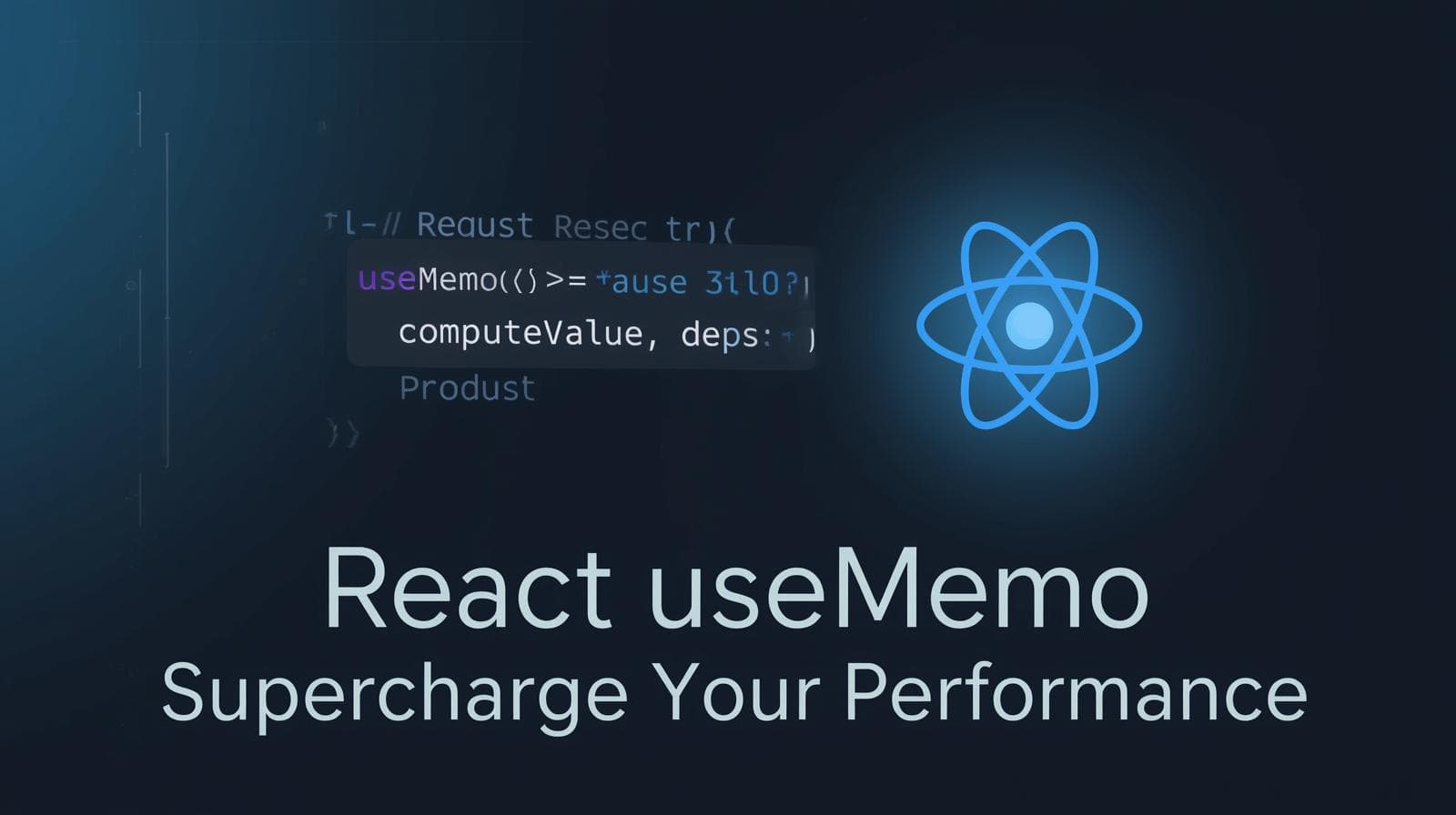Master React useContext Hook: A Complete Guide to State Management

Tired of prop drilling? Our in-depth guide explains the React useContext Hook with examples, best practices, and real-world use cases. Simplify your state management today!

Master React useContext Hook: A Complete Guide to State Management
Taming Component Chaos: Your Ultimate Guide to the React useContext Hook
If you've been building React applications for more than a few components, you've likely run into a common headache: prop drilling. You need a piece of state at the top of your app (like a user's authentication status) and another piece deep in a child component (like a profile avatar). The only way to get it there? Pass it down through every single component in between, whether they need it or not.
It’s messy, it’s error-prone, and it makes your code harder to maintain. Wouldn't it be wonderful if there was a way for a component to just "ask" for the data it needs, directly?
Enter the React useContext Hook.
In this comprehensive guide, we're not just going to scratch the surface. We'll dive deep into what useContext is, why it's a game-changer, and how you can use it effectively in your projects. We'll walk through practical examples, discuss real-world use cases, highlight best practices, and answer common questions. Let's simplify your state management and write cleaner, more efficient React code.
What Exactly is the React useContext Hook?
At its core, useContext is a built-in React Hook that allows you to subscribe to a React context without introducing a nested component structure. Let's break that down.
First, what is "Context"?
React's context API is a system that enables you to create global data that can be accessed by any component in the tree beneath the context provider, without having to pass props down manually at every level. Think of it as a "bubble" of data that you wrap around a part of your component tree. Every component inside that bubble can access the data within.
The useContext hook is the tool that lets a component tap into that "bubble" of data. It's like a subscription service for your component; it tells React, "I want to read the value from this specific context."
Why Do We Need It? The Prop Drilling Problem
Imagine a component structure like this:
jsx
<App> {/* user, theme */}
<Header user={user} theme={theme}>
<Navigation user={user} theme={theme}>
<UserMenu user={user} theme={theme}>
<Avatar user={user} theme={theme} />
</UserMenu>
</Navigation>
</Header>
</App>The App component holds the user and theme data. The Avatar component, buried four levels deep, needs this data. To get it there, we have to pass the props through Header, Navigation, and UserMenu, even though these intermediate components don't actually use the user or theme data themselves. They are just "pass-through" components.
This is prop drilling, and it becomes a nightmare in large applications. useContext eliminates this by allowing Avatar to directly access the user and theme data.
How to Use useContext: A Step-by-Step Example
Let's build a classic example: a theme switcher (Light vs. Dark mode).
Step 1: Create a Context
First, we need to create the "bubble" of data. We do this using React.createContext().
jsx
// ThemeContext.js
import { createContext } from 'react';
// Create the context object.
// The argument passed to createContext is the default value.
// This is used when a component is used outside a Provider.
export const ThemeContext = createContext('light'); // default valueStep 2: Provide the Context
Now, we need to wrap our component tree with a "Provider." This is the component that supplies the data to all its children. The Provider accepts a value prop, which is the current data you want to share.
jsx
// App.js
import React, { useState } from 'react';
import { ThemeContext } from './ThemeContext';
import Header from './Header';
function App() {
// We'll manage the theme state here, at the top level.
const [theme, setTheme] = useState('light');
return (
// Wrap the tree with the Provider and pass the current theme and the setter function.
<ThemeContext.Provider value={{ theme, setTheme }}>
<div className={`app ${theme}`}>
<Header />
{/* ... other components ... */}
</div>
</ThemeContext.Provider>
);
}
export default App;Step 3: Consume the Context with useContext
Finally, any component inside the ThemeContext.Provider can now access the theme and setTheme values using the useContext Hook.
jsx
// Header.js
import React from 'react';
import { ThemeContext } from './ThemeContext';
function Header() {
// useContext hook subscribes this component to the ThemeContext.
const { theme, setTheme } = React.useContext(ThemeContext);
const toggleTheme = () => {
setTheme(theme === 'light' ? 'dark' : 'light');
};
return (
<header>
<h1>My Awesome App</h1>
<button onClick={toggleTheme}>
Switch to {theme === 'light' ? 'Dark' : 'Light'} Mode
</button>
</header>
);
}
export default Header;And there you have it! The Header component can now read the current theme and change it, without any props being passed down from App. It's clean, direct, and powerful.
Real-World Use Cases for useContext
While a theme switcher is a great learning example, useContext shines in many practical scenarios:
User Authentication: Share the current user object, login, and logout functions across the entire app. Navbars, sidebars, and permission-based buttons can all access this data effortlessly.
Global UI State: Manage state for modals, toasts (notifications), loading spinners, or sidebars. A "show toast" function can be called from anywhere to trigger a global notification.
Preferred Language/Locale: For internationalization (i18n), a context can hold the user's selected language and the translation function, making it available to every text-rendering component.
Shopping Cart: In an e-commerce app, a cart context can hold the items, add/remove functions, and total price, accessible from any product card or the cart page itself.
Mastering these patterns is crucial for modern web development. To learn professional software development courses such as Python Programming, Full Stack Development, and MERN Stack, visit and enroll today at codercrafter.in. Our curriculum is designed to take you from fundamentals to building complex, real-world applications.
Best Practices and Common Pitfalls
useContext is powerful, but with great power comes great responsibility. Here’s how to use it effectively.
Don't Overuse It: Not all state needs to be global. Use local state (
useState) for state that is truly confined to a single component (like a form input's value). Lift state up via props when only a few sibling components need it.Optimize Performance with Memoization: When the context value changes, every component that calls
useContextfor that context will re-render. If your context value is an object (like ours:{ theme, setTheme }), a new object is created on every render of the Provider, causing unnecessary re-renders.Solution: Memoize the context value with
useMemo.jsx
// App.js (Optimized) import React, { useState, useMemo } from 'react'; function App() { const [theme, setTheme] = useState('light'); // Memoize the context value to prevent unnecessary re-renders const themeContextValue = useMemo(() => ({ theme, setTheme }), [theme]); return ( <ThemeContext.Provider value={themeContextValue}> <div className={`app ${theme}`}> <Header /> </div> </ThemeContext.Provider> ); }Split Contexts Logically: Instead of having one giant context for all your global state (a "God Context"), create multiple, smaller contexts based on functionality (e.g.,
AuthContext,CartContext,NotificationContext). This improves performance and organization.Provide a Custom Hook: For better Developer Experience (DX), you can export a custom hook from your context file.
jsx
// ThemeContext.js import { createContext, useContext } from 'react'; export const ThemeContext = createContext(); // Custom Hook export function useTheme() { const context = useContext(ThemeContext); if (context === undefined) { throw new Error('useTheme must be used within a ThemeProvider'); } return context; }Now, in your components, you can simply use
const { theme } = useTheme();which is cleaner and includes error handling.
Frequently Asked Questions (FAQs)
Q: Can I use multiple useContext Hooks in a single component?
A: Absolutely! You can subscribe to as many different contexts as you need in one component.
jsx
function FancyComponent() {
const user = useContext(UserContext);
const theme = useContext(ThemeContext);
const cart = useContext(CartContext);
// ...
}Q: How is useContext different from Redux or other state management libraries?
A: useContext by itself is not a full-state management library. It's a mechanism for propagating state. It doesn't have built-in devtools, middleware, or sophisticated update logic. For many applications, useContext combined with useReducer is sufficient. For very large, complex apps with high-frequency state updates, libraries like Redux, Zustand, or Jotai might be more appropriate.
Q: What happens if I use useContext outside a Provider?
A: It will return the default value you passed to createContext(). If you didn't provide a default (e.g., createContext()), it will be undefined. This is why the error check in our custom hook is so useful.
Q: Is it okay to use useContext for state that changes frequently?
A: It can be, but you must be cautious about performance. If the context value changes often and many components are subscribed, it can lead to many re-renders. Use memoization (React.memo, useMemo) and consider splitting contexts to isolate updates.
Conclusion: Simplify Your React Journey
The useContext hook is a cornerstone of modern React development. It provides an elegant and built-in solution to the messy problem of prop drilling, allowing you to create clean, maintainable, and well-structured applications. By understanding how to create a context, provide it, and consume it with useContext, you've added a vital tool to your React toolkit.
Remember the key principles: use it for truly global state, optimize with memoization, and split your contexts for better performance and organization.
The journey to becoming a proficient full-stack developer is filled with mastering such fundamental concepts. If you found this guide helpful and are looking to solidify your understanding of React, Node.js, and other cutting-edge technologies, we have just the path for you. To learn professional software development courses such as Python Programming, Full Stack Development, and MERN Stack, visit and enroll today at codercrafter.in. Let's build the future, one line of code at a time.









